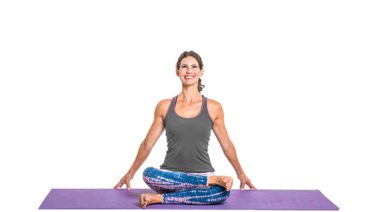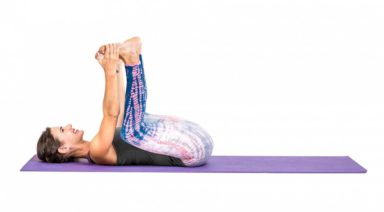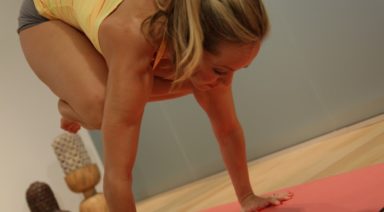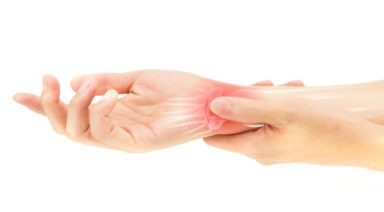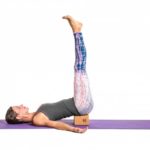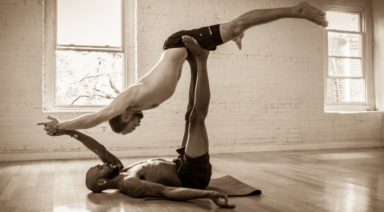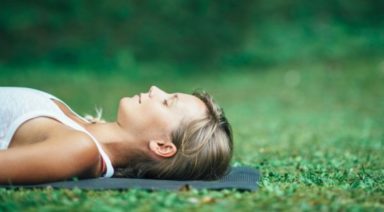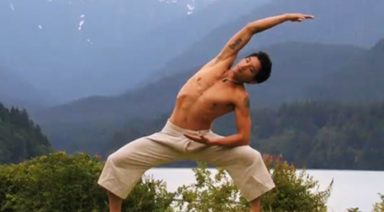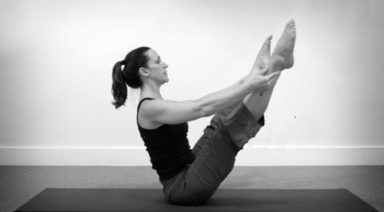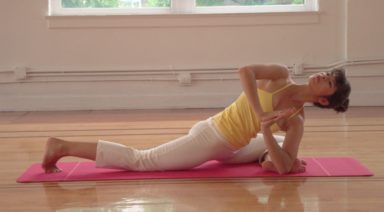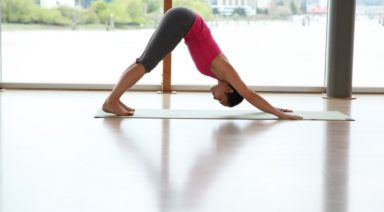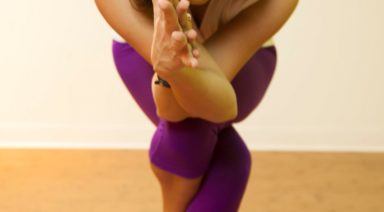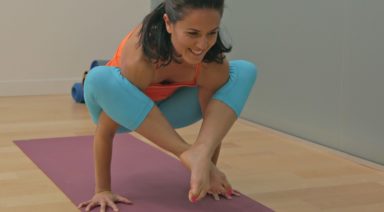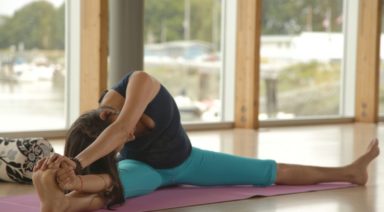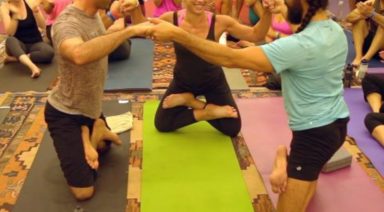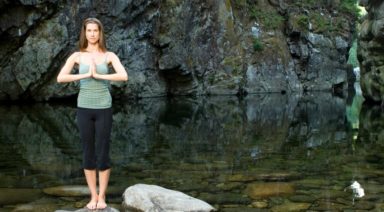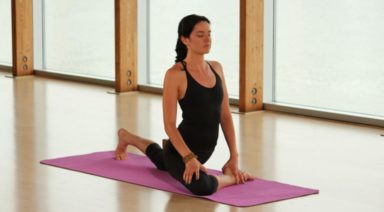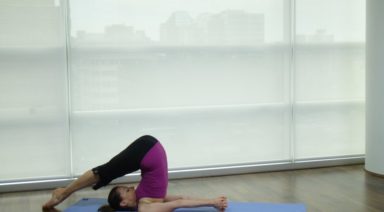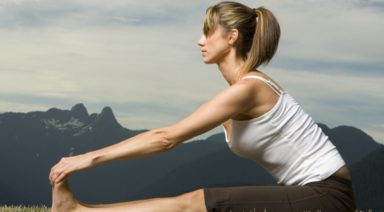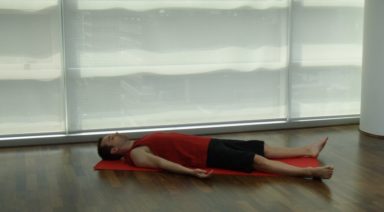Garudasana: Eagle Pose
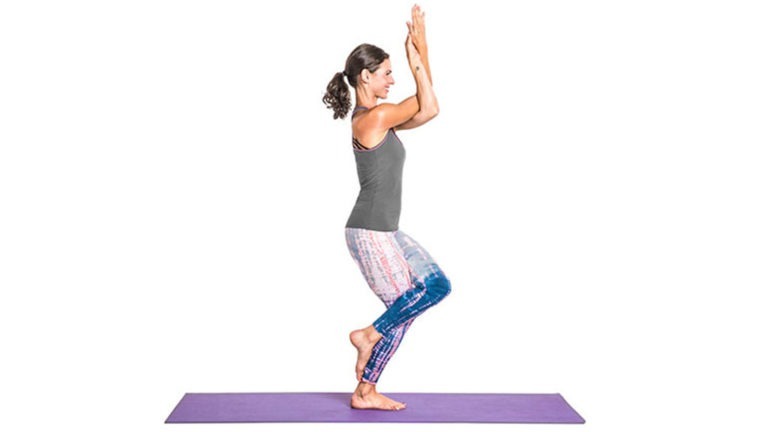
ADJUSTMENTS | BENEFITS | SEQUENCING | SANSKRIT | STEPS
Eagle pose, or garudasana (gah-rue-DAHS-anna), requires a combination of balance, strength, and flexibility. A great stretch for your shoulders, upper back, and legs, garudasana creates space in your body physically, but also opens up space mentally. To sustain the posture, you must give it your full attention and commitment, drawing your mind to one singular point of focus.
Philosophy + Origin
Although commonly known as eagle pose, the word “garuda” in Sanskrit really refers to a great mythical bird, one with a golden body, white face, and red wings. The king of all birds, Garuda is the vehicle of choice for Lord Vishnu, who serves as the preserver and protector of humans and creation. Garuda is the bird who managed to obtain the elixir of immortality, soma, in order to save his mother Vinata from enslavement.
ADJUSTMENTS/MODIFICATIONS:
- Try this pose with your back or hand to a wall to support balancing.
- Cross your legs while allowing the toes of your lifted leg to press into the floor for extra balance. This is also the recommended adjustment if you have knee issues.
- For the hot style variation, pull your elbows down toward your naval.
STEP-BY-STEP:
- From standing, bend both of your knees. Raise your right foot off the ground, bending your standing leg slightly. Cross your right thigh over your left, reaching your right foot back with toes pointing down. Option to place your right toes on the ground or hook the top of your right foot at the back of the left calf.
- Distribute the weight in your standing foot equally to help create a solid foundation.
- Cross your left elbow over your right and bend both elbows to bring forearms perpendicular to the ground. Rest the backs of your hands together or cross at the wrists to bring your palms together.
- Lift your elbows up to shoulder height and away from you to increase the stretch through your upper back, scapulae, and shoulders.
- Stay in Garudasana for 20 to 30 seconds with steady breathing. Release the posture and return to standing to repeat on the other side.
PREPARATORY POSES:
- Cow face pose | Gomukhasana
- Chair pose | Utkatasana
- Tree pose | Vrksasana
SEQUENTIAL POSES:
- Standing figure four (half chair) | Ardha utkatasana
- Warrior III | Virabhadrasana III
- Eagle-leg side crow
COUNTER POSES:
- Bridge pose | Setu bandha sarvangasana
- Dancer pose | Natarajasana
- Goddess pose | Utkata konasana
SANSKRIT:
- Garuda = mythical bird, vehicle of Lord Vishnu
- Asana = pose
PHYSICAL BENEFITS:
- Strengthens thighs, ankles, and calves.
- Stretches shoulders, arms, and upper back.
- Improves balance and coordination.
- Helps flush lymphatic system.
ENERGETIC BENEFITS:
- Develops focus and concentration.
- Moves “stuck” energy.
Legal Disclaimer Before participating in any exercise program or using any fitness products or services that may be described and/or made accessible in or through the Gaia Website and/or the Services, you should consult with a physician or other healthcare provider. Read more about Gaia’s Terms Of Use.
Agnistambhasana: Firelog Pose

ADJUSTMENTS | BENEFITS | SEQUENCING | SANSKRIT | STEPS
Agnistambhasana (AG-nee-stahm-BAHS-ah-nah) is sometimes referred to as double pigeon pose because the legs take a similar shape as they do in pigeon pose. Firelog pose creates a deep stretch in the outer hips and space in the low back.
Philosophy + Origin
Fire (agni) is a transformative element. Agnistambhasana can be very uncomfortable as many people carry deep tension in their hips. See if you can feel the fire building in your hips and with your breath as you hold this pose.
ADJUSTMENTS/MODIFICATIONS:
- Sit on a folded blanket or block to create more space for your hips.
- Place your top leg in front of your bottom leg (rather than on top of it) to ease pressure on the knees.
- Use a block under your top ankle to release pressure on your bottom leg.
- Use a block under your top knee to help the hip relax and to relieve discomfort in the knee.



